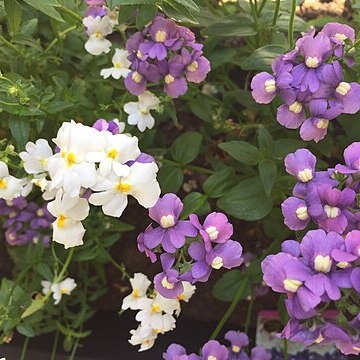An erect herb, annual, 6-24 in. high, glabrous below, somewhat glandular-pilose above, leafy at least below, usually branched from the base; stem and branches quadrangular; leaves opposite, glabrous, 1/2-3 in. long, the lower oblanceolate-spathulate and entire or somewhat dentate, the cauline sessile, dentate and lanceolate or the uppermost linear; racemes 2-4 in. long, terminal, glandular-pilose, subcorymbose in flower, compact, elongating after the fall of the corolla; bracts sublinear, entire or toothed, glandular-pilose, spreading, 1/8-1/2 in. long; pedicels ranging up to 1 1/2 in. long; calyx-segments linear, obtuse, pilose, 1/6-1/4 in. long, spreading in flower, erect in fruit; corolla bilabiate, very various in colour from different shades of yellow or purple to white, often veined and marked with purple on the outside; throat with dusky points on a yellow ground; upper lip 4-cleft, 1/4-3/8 in. long, 2/3-1 in. broad, glabrous within; lobes rounded; lower lip 3/4-1 1/8 in. broad, notched at the apex, bearded within especially towards the base; pouch short, broad, slightly bifoveolate; capsule roundly oval, 1/3-1/2 in. long; valves diverging at the apex, obliquely truncate along curved lines including a large angle; seeds numerous, tuberculate, winged.
More
Annual to 80 cm. Leaves opposite, linear-oblanceolate to ovate, slightly toothed. Flowers in subumbellate racemes, saccate, throat coarsely hairy, white, yellow, orange, pink, magenta, or red, purple, yellow or mottled purple and yellow in throat, lobes rounded. Capsules longer than wide.

